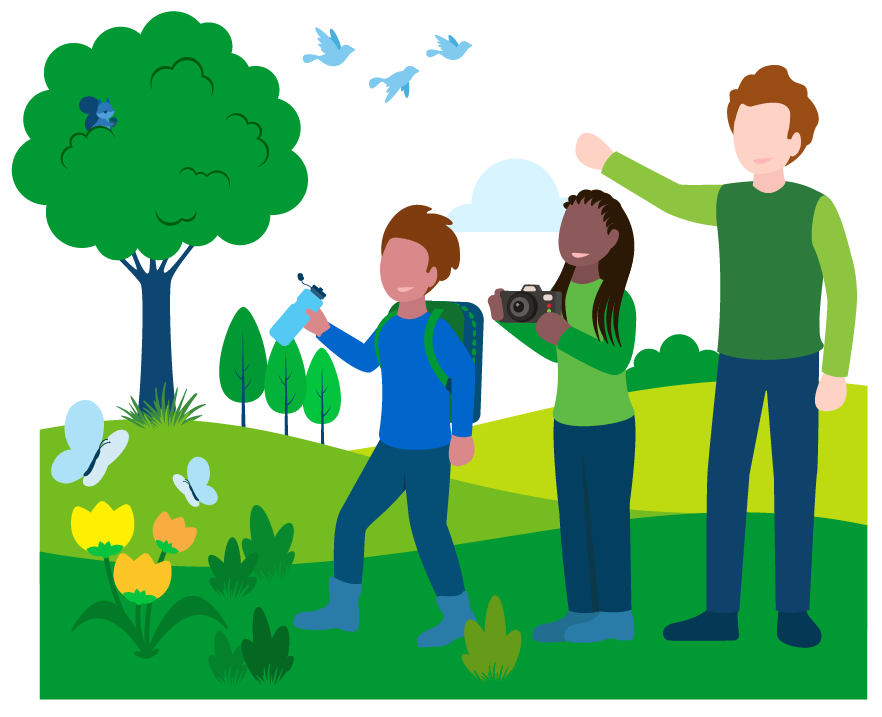Greenbelt Biodiversity
Greenbelts exist all over the world, but Ontario’s Greenbelt is the world’s largest! Stretching over two million acres, the Ontario Greenbelt is one of the most biodiverse areas in all of Canada.
The Greenbelt designation is used in land-use planning to protect natural, agricultural, undeveloped, and residential areas, as well as critical water systems that surround and intersect urban areas. These important landscapes are home to many farms that grow our food, help clean our air and water, provide habitat for wildlife, and ensure our communities have natural spaces to explore.
For the Greenbelt Biodiversity action, students are invited to conduct a biodiversity inventory and plant native species on their school grounds. While this action is focused on Ontario’s Greenbelt, biodiversity inventories are still a powerful way to support conservation initiatives in your region!

Grants for schools within the Ontario Greenbelt Region
We are excited to announce the winners of the Greenbelt Biodiversity grant. A total of $18,000 in funding will be given to help develop new and exciting biodiversity projects at 14 Ontario elementary and secondary schools. See the winners below!

Winners 2023

Richmond Hill High School $5,000
Robert F. Hall Catholic Secondary School $1,000
St. Patrick Catholic Elementary School $1,000
St. Peter Catholic Elementary School $1,000
Clearmeadow PS $1,000
James Grieve PS $1,000
Marc Garneau Collegiate Institute $1,000
General Crerar Public School $1,000
Grey Highlands Secondary School $1,000
École Secondaire Gaétan-Gervais $1,000
Bowmore Junior and Senior Public School $1,000
Harrison Public School $1,000
Chinguacousy Secondary School $1,000
Ross Drive Public School $1,000
Read the press release here.
Greenbelt Biodiversity Resources
Making Connections
- The Greenbelt Biodiversity action can be connected to Math, Science, and Civics lessons.
- Connect your Greenbelt Biodiversity action to the Sustainable Development Goals including Good Health and Well-being, Sustainable Cities and Communities, and Life on Land.





